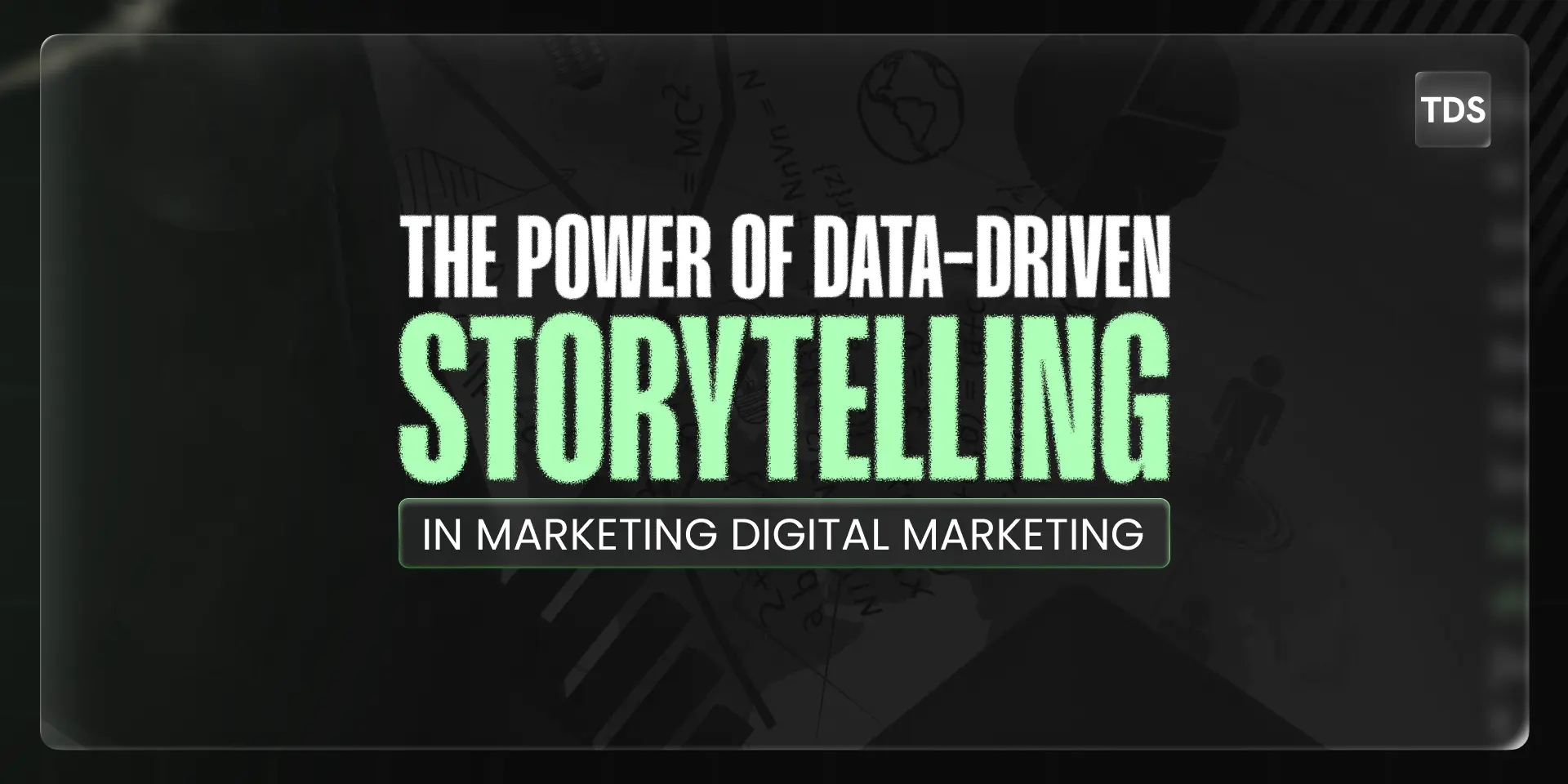People are always getting new stuff in today’s busy online environment. People’s attention spans are short, and old-fashioned advertising methods don’t always work. In 2025, the best brands will be able to convey stories with data insights, which is called data-driven storytelling.
This method is becoming one of the most useful tools for digital marketing. It doesn’t simply tell stories; it tells stories that are backed up by facts, insights, and significance. Let’s look at how data-driven storytelling changes digital marketing campaigns and why it’s changing the way brands talk to people in the future.
What is Data-Driven Storytelling?
The technique of data-driven storytelling aims to use numbers, analytics, and consumer insights to tell interesting stories. Marketers don’t just toss numbers at people; they utilize them to tell tales that connect with people on an emotional level and make them believe in their brand.
For instance:
1- A fitness app doesn’t merely declare, “We help you stay active.” Instead, it recounts the tale of how people walked 10 million steps in a month, which encourages new users to join.
2- A business consulting firm doesn’t merely say, “We grow businesses.” It shows real customer journeys with demonstrable results, which makes its digital marketing efforts more real.
Why It Matters in Digital Marketing
Here are the reasons why data driven story-telling is important in digital marketing:
1. Increases trust and credibility
People don’t believe what marketers say. Data makes stories plausible by giving them a basis in reality. Customers are more inclined to believe a brand’s digital marketing messaging when they see real outcomes.
2. Makes the content easy to understand
Numbers by themselves might seem cold and distant. Marketers make experiences that people can relate to by mixing data with tales about people. Instead of declaring “30% of users improved productivity,” businesses talk about a real client who saved 10 hours a week by utilizing the product.
3. Increases Engagement
Stories make people feel things, whereas data makes them want to know more. They work together to make content that people want to read and share. This mix of methods works especially well in digital marketing, since people don’t pay attention for long.
4. Helps with personalization
Personalization is a big part of modern digital marketing. Data-driven storytelling lets organizations customize tales for diverse groups of customers by providing each group the data and stories that are most important to them.
5. Makes it easier to make decisions
Even if emotions lured them in at first, tales backed by data help buyers make sense of their choices. This mix of emotion and reason makes advertising more convincing.


How to Use Data-Driven Storytelling in Digital Marketing
Following are the steps to successfully use storytelling in digital marketing:
Step 1: Get the Right Information
Some data is more helpful than others. Focus on data that represents consumer experiences, industry trends, or quantifiable effects. This might be sales numbers, answers to surveys, or platform analytics.
Step 2: Look for the Story
Numbers by themselves aren’t enough. What tale do these figures tell? If your campaign quadrupled conversions in three months, the tale may be about how new ideas can really help digital marketing flourish.
Step 3: Use pictures
Graphs, infographics, and dashboards turn hard-to-understand data into easy-to-read pictures. A simple picture that goes with a story is far more powerful than just numbers.
Step 4: Make the story more humanAlways connect data to actual people. Put the focus on customer reviews, case studies, or contributions from employees. This makes sure that your digital marketing strategy doesn’t feel like a machine.
Step 5: Distribute Across Channels
Data-driven storytelling works on multiple platforms:
- LinkedIn posts with success metrics
- Instagram carousels highlighting customer journeys
- Email campaigns featuring before-and-after results
- Blogs that combine statistics with brand stories
This multichannel approach ensures maximum reach and engagement.
Real-World Examples
Some important examples are:
Spotify Wrapped: Every year, Spotify sends out individualized year-end summaries that show users how they listened to music. It’s not just numbers; it’s a human tale that makes it one of the best digital marketing initiatives ever.
Airbnb Reports: Airbnb provides tales about how hosts and guests affect the areas they visit, backed up by real statistics. This makes the brand look both socially aware and trustworthy.
Nike’s Data Campaigns: Nike uses fitness monitoring data to tell inspiring tales about customers. This motivates consumers and strengthens the brand’s identity in digital marketing.
The Future of Data-Driven Storytelling
Storytelling will get much better with AI and predictive analytics starting in 2025 and beyond. AI can find trends, predict how people will act, and write stories that are very specific to each person. For marketers, this means more engaging stories backed by precise, real-time insights.
The future phase of digital marketing will be defined by the combination of data and creativity. Brands that know how to create stories with data will not only stand out, but they will also connect with their audience on a deeper level that lasts longer.
FAQs
Traditional storytelling focuses on emotions and tales. Data-driven storytelling blends such themes with evidence, making digital marketing initiatives more convincing and believable.
It promotes trust, boosts engagement, and encourages customization by integrating facts with tales that appeal emotionally. This makes internet marketing more effective.
Yes. Even small firms may collect simple information like customer satisfaction rates or sales growth and convert them into tales that boost their digital marketing initiatives.
Google Analytics, HubSpot, and social media insights tools are examples of analytics platforms that assist you collect and display data so you may utilize it effectively in digital marketing.
Absolutely. From healthcare and education to retail and finance, every business can leverage data-backed storytelling to strengthen their digital marketing approach.
